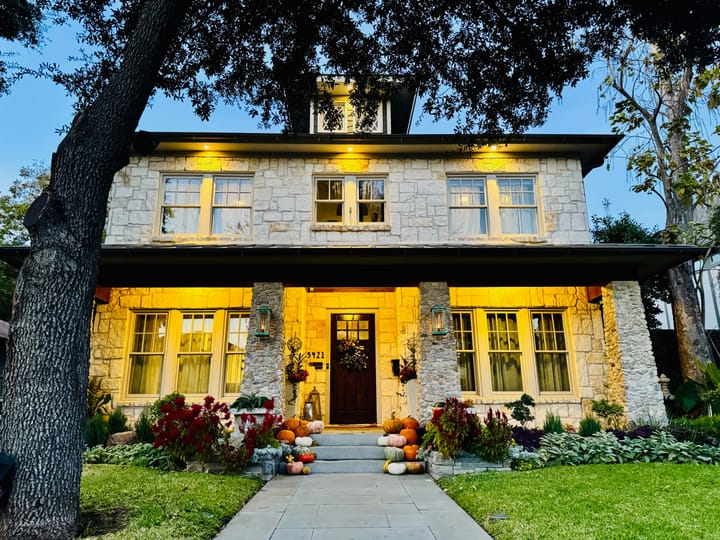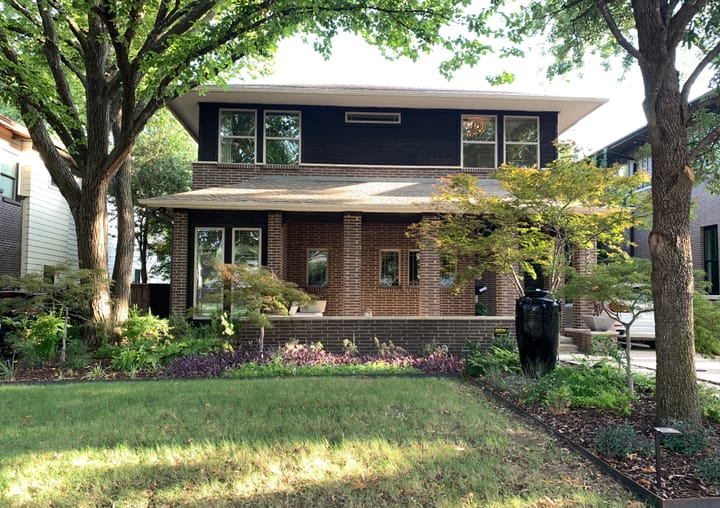February Yard of the Month
Spring is just around the corner, and for gardening enthusiasts in East Dallas, now is the perfect time to prepare your Zone 8 yard and beds for a flourishing growing season. These tips and plant recommendations can set you up for success.

Spring is just around the corner, and for gardening enthusiasts in East Dallas, now is the perfect time to prepare your Zone 8 yard and beds for a flourishing growing season. Whether you’re planting flowers, vegetables, or creating a lush landscape, these tips and plant recommendations can set you up for success.
1. Plan Your Garden Layout
Before planting, sketch a simple plan of what you want to grow and where. In Zone 8, consider sun-loving vegetables like tomatoes, peppers, and squash, alongside herbs like basil and oregano. If you’re adding trees, think about varieties like crepe myrtle, Eastern redbud, or fruit trees like fig (‘Celeste’ or ‘Brown Turkey’) and peach (‘Elberta’ or ‘Red Haven’).
If you want to use technology to help you plan your garden, consider an app like Gardena, Gardenize, or iScape.
2. Test and Amend Your Soil
Healthy soil is the foundation of a thriving garden. Test your soil’s pH and nutrient levels using an at-home kit or by sending a sample to your local extension office. Add compost, aged manure, or amendments like sulfur (to lower pH) or lime (to raise pH) as needed. In North Texas, clay-heavy soil often benefits from organic matter to improve drainage.
3. Start Seeds Indoors
Cool-season crops like broccoli, cauliflower, and lettuce can be started indoors in late winter, along with warm-season plants like tomatoes (‘Cherokee Purple’ or ‘Sun Gold’) and peppers (‘California Wonder’ or jalapeños). These will be ready for transplanting after the last frost, typically in mid-March in the Dallas area.
4. Clean and Sharpen Tools
Dust off those gardening tools! Clean, sharpen, and oil them to ensure they’re in good working order. This will save time and effort once the season is in full swing.
5. Prune Trees and Shrubs
Late winter or early spring is an excellent time to prune trees and shrubs in Zone 8. Trim dead or damaged branches from crepe myrtles, Southern magnolias, and roses (like ‘Knock Out’ or ‘Lady Banks’). Avoid pruning spring-blooming shrubs like azaleas or camellias until after they flower.
6. Mulch and Weed Early
Clear out weeds before they have a chance to take over, and apply mulch to retain moisture and suppress future weed growth. Hardwood mulch or pine straw works well and can help regulate soil temperature as the weather warms.
7. Prepare Watering Systems
Check your irrigation or drip system to ensure it’s functioning correctly. If you rely on hoses, inspect them for leaks and replace damaged parts. For a more eco-friendly option, install a rain barrel to collect water during the rainy spring months.
8. Plant for Pollinators
Attract bees, butterflies, and other pollinators by planting native flowers and pollinator-friendly blooms. Options include black-eyed Susans, coneflowers, blanket flowers, coreopsis, and milkweed for monarch butterflies. Herbs like lavender and thyme also pull double duty, attracting pollinators and enhancing your garden’s fragrance.
9.Learn More From Local Experts
- https://www.nhg.com
- https://www.dallasarboretum.org/education/
- https://agrilifeextension.tamu.edu
- https://neilsperry.com
With these steps and Zone 8-specific recommendations, your garden will be off to a thriving start this spring. Happy planting!
What are your favorite plants to grow in our zone? Share your ideas, and let’s make this the most vibrant growing season yet!




Comments ()